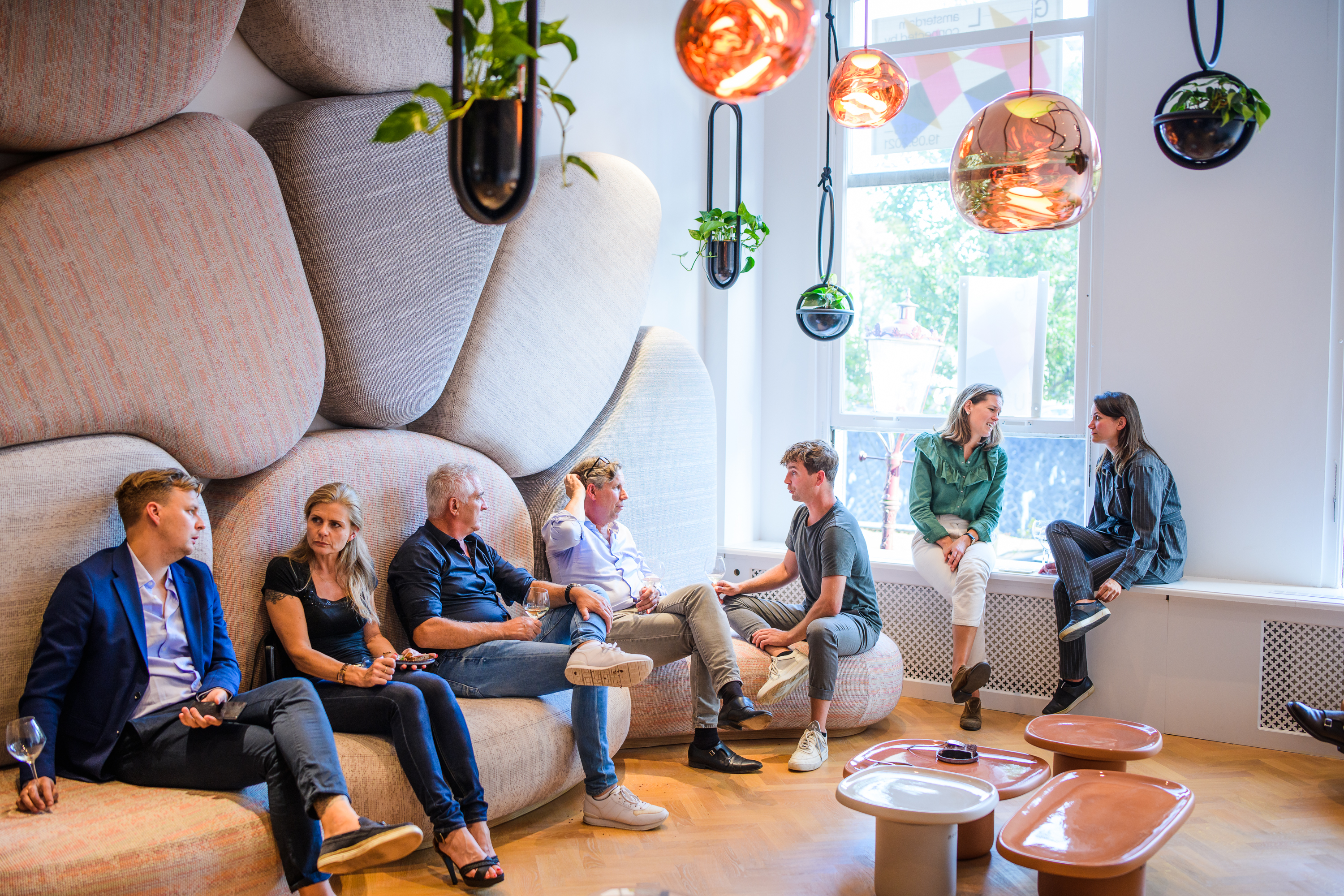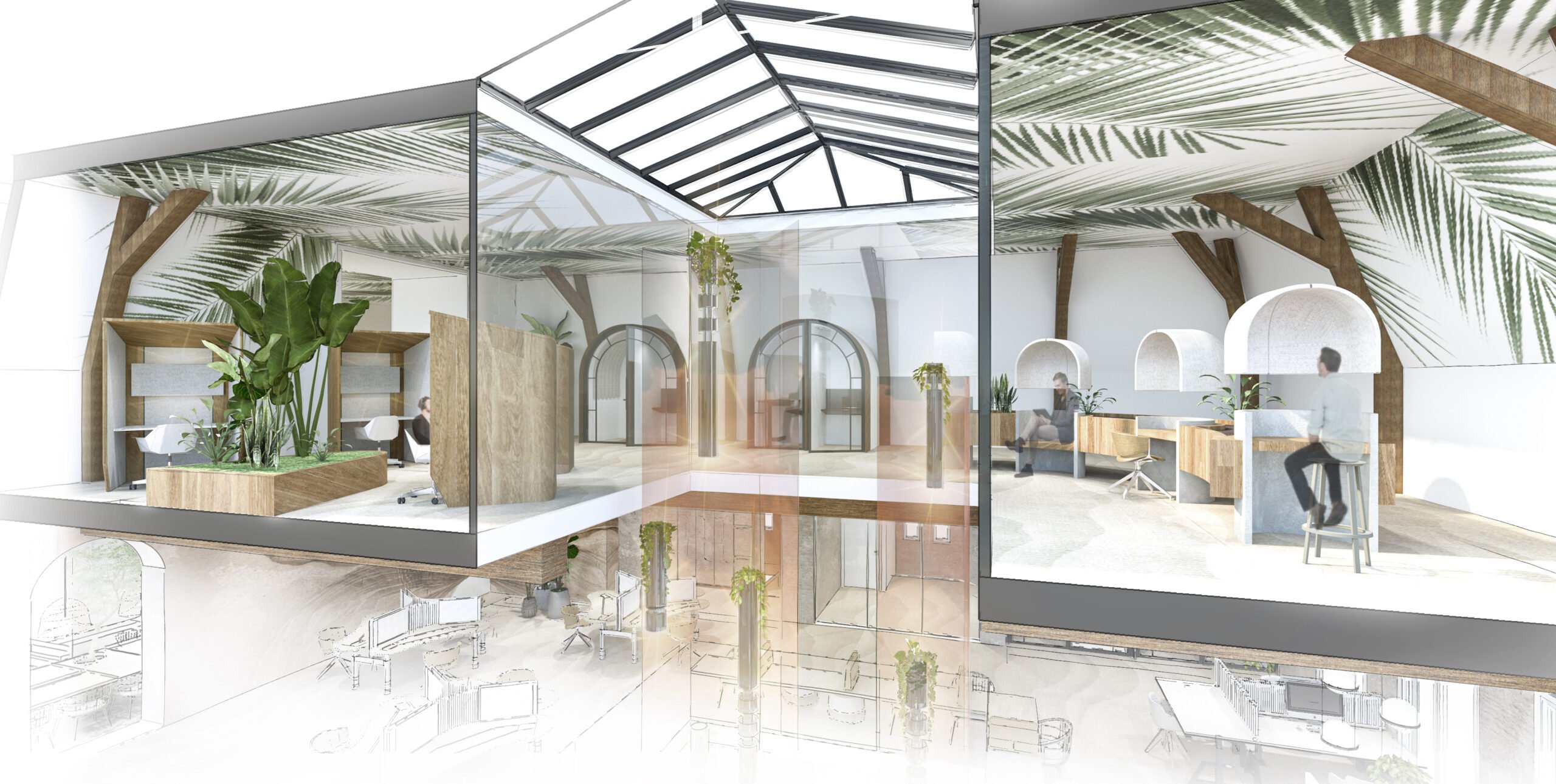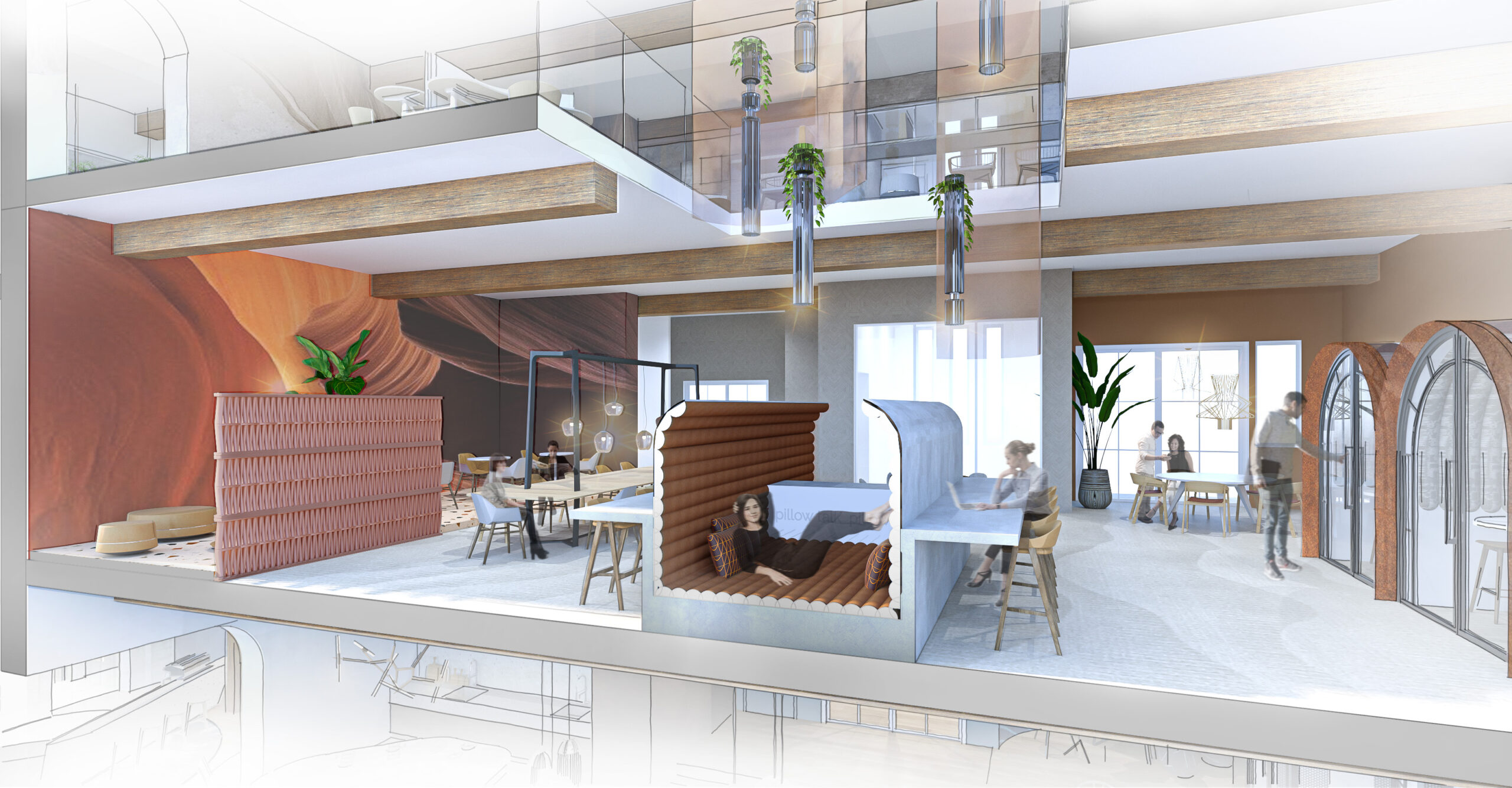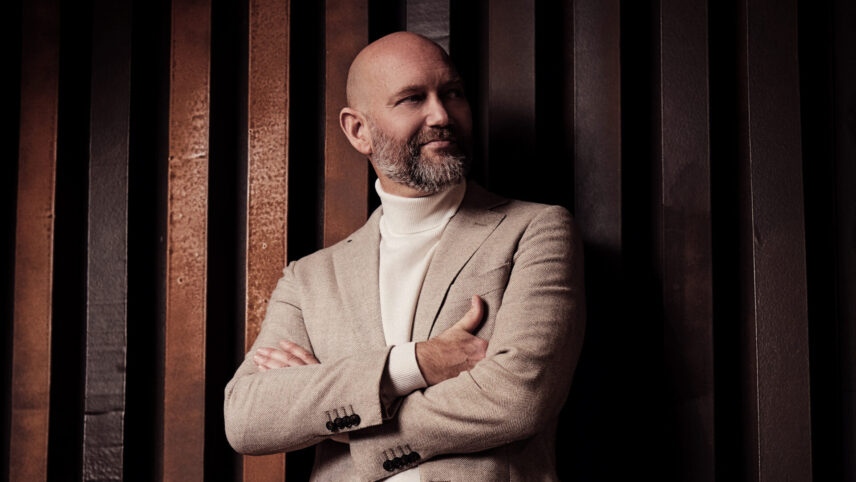Renowned Dutch architect Casper Schwarz is introducing a new concept that will make the office a pleasant place to drink a glass of wine after a working day or why not even for growing vegetables. In a longer interview, Schwarz talks about a bold idea born during the pandemic, hesitant attitudes, and cooperation with the Estonian DesignTech startup OCCO, which is conquering the world.
How did your collaboration with OCCO start and why did it fascinate you?
I got acquainted with OCCO a little over a year ago. I started designing their Amsterdam office and wanted to explore their platform to continue working together in the future. There are several similar platforms on the market where designers can search for and choose furniture, but OCCO differs in that you can see the actual prices as well as technical files with the selection of furniture.
Imagine that you are an interior designer, and you have a project in mind. You are picking out ceilings, floors, and furniture, but prices vary from 500 euros to 5000 euros. You make your choices and only then find out that you’re well over budget. With OCCO you can immediately see the price and in addition you can choose between different brands. This is a very handy and a very good option.
You don’t want to deceive customers where choosing nice items will result in your telling them that the price will be twice as high. Thus, it may feel like everything the architect chooses is going to be very expensive, but that’s not the case! This is complete nonsense, because the architect actually wants to find the right product for each project.
Another good feature is that there are different manufacturers on the OCCO platform. You can also choose from smaller or lesser-known players. Sometimes they have exceptionally cool furniture. From time to time we like to change our furniture selection by projects and try new things. OCCO has made a significant contribution in this regard.

You have created a completely new concept called Habitoor. Why was it needed and what is it?
The motive for creating Habitoor was the COVID-19 pandemic. It shed new light on what the work environment and office should look like. Over the years, the office has mainly been a place where a lot of people can work together. This is how most office buildings are built or chosen. In particular, light, acoustics, room design and air conditioning are taken into account. It is a systematic concept built primarily on numbers.
The change that Habitoor brought is that if people have the opportunity to work outside the office, there must be a reason to come to the office at all. It’s not because they have to, but because they want to. When creating such an environment, one must think from the point of view of the individual. Firstly, do you like colleagues, and secondly, what is the space you are coming to. What you feel when you get there, what you can do there, whether this place inspires you and what kind of energy it offers.
So, we thought that we would completely forget the principles of an ordinary office and do something completely different. Habitoor is like the home of an organization. When you think of a home, there are no items one has in the office. Our principle is to create a place where it would be good to be and work with colleagues, but also to relax and enjoy free time.

So, what is most important in creating a modern work environment?
One must forget everything ordinary and think with the heart, from a human perspective. When you think about what your dream office would be like, I believe it would not look like an office. Think how awesome it would be to work in a place where you want to take Instagram selfies or pictures of your day all the time. You’ll feel good there, and maybe you can spend some time with your co-workers, talking and having a glass of wine.
What furniture elements should there be?
In general, there are two directions in the world of furniture: project furniture and home furniture. For some reason, the project furniture is very simple – the usual shape and colours, there are no details. I don’t know why that is. The same people are sitting there on the couch or behind the table – why does the project table have to be so different? I’m not saying there must be an ultra-comfortable armchair in the office, but it could definitely be the kind of office furniture you want in your home.
Can Habitoor be implemented anywhere or are there still limits?
One thing is that Habitoor can be built in any building. For example, you can even set up an office in a farmhouse – employees can go outside, grow their own food or walk in the woods. But there are many other types of buildings to build an office in – it all depends on the company and the people.
The difficulty, however, is that if I am in an unfamiliar territory, I have to think carefully about how to set up an office there. We need to create a concept that will eventually work as a work environment. It must also be borne in mind that there are probably several types of people coming together, which means that the environment must be suitable for everyone. Some need silence, some need space to be creative. We will certainly make mistakes when setting up Habitoor offices, but I think such challenges are very fascinating and interesting to solve.
Could this be a problem if people feel too comfortable at work?
I do not believe this. At home, a person feels very well and comfortable. If not, there is something wrong. Speaking from a Dutchman’s point of view, I have not heard anywhere that people are no longer working in the home office or are suddenly becoming lazy. It has even been said that productivity increased during the pandemic. I think it’s the old-fashioned way to think that comfort inhibits productivity. We live in an ambitious world where people want to do their jobs better and better. Comfort rather supports ambition.

So, you see the trend that the classic office is history or at least changing?
Many organizations want change, they are looking for opportunities and inspiration. There is a desire. At the same time, they are afraid of change. We have given Habitoor presentations in several companies and people are always very interested at first, but when I ask what do you think about this afterwards, I realize that they are still stuck in the old model. To break down barriers, you need to find a company that is fully prepared and understands why change is important. The situation today is such that there is interest but no courage.
What would break this barrier – better communication of the message?
Yes, that’s a very good idea. Before the pandemic, not every office was a typical and boring place. Many start-ups have created awesome spaces for their talent. They do not want to work like the older corporations. I see that new players start everything, including setting up an office, with a whole new perspective. Such projects also need to be presented to others and shown what can be done. This is how we take a step forward.
For our part, we prepare Habitoor presentations, and we always try to go one step further with them and also present small details. Maybe this will give people a better idea of why change is needed and how to look at the building and the work environment from a different perspective. In this way, people’s world of thought can be changed step by step.




